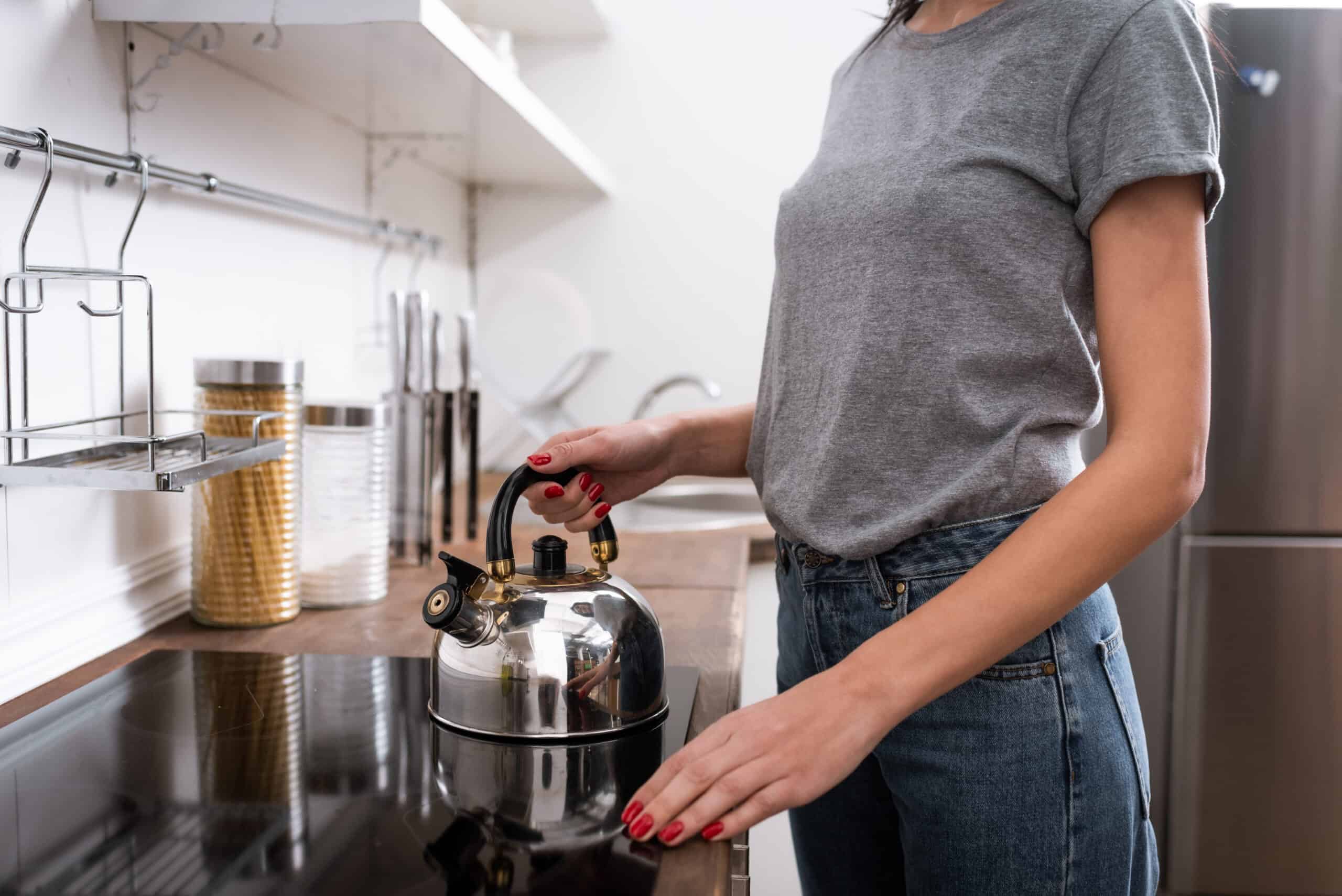Heating your leftovers using a microwave is easy and convenient. In many cases, takeout is packed in either plastic or metal containers.
While it is common to microwave food using plastic containers, it can be uncertain whether it is safe to use metallic containers for fear that they may blow up or catch fire.
Fortunately, it is safe to use metallic takeaway containers, provided they are smooth, and the proper precautionary measures are observed.
Most of the time, the metal used for food containers is aluminum with an interior coated with plastic. It is advisable, though, not to microwave metal containers too regularly.

Can You Microwave Aluminum Containers?
Perhaps you got food from your favorite takeout joint, and some of it got left over in the aluminum container it came with. Are you wondering if it is safe to microwave it in that container?
Well, yes, you can. Aluminum containers are totally microwave-friendly, especially when you follow the safety tips that will be highlighted in this article.
When you put an aluminum container in the microwave, a magnetron conducts electric current and generates microwaves. The magnetron continuously goes on and off every second to gradually heat the food.
When used correctly, microwaving aluminum containers will not affect the performance or longevity of your machine.
Still, eating food from aluminum containers is not recommended on a regular basis as it is not very safe for your health. However, it is fine to microwave that many times if there is no alternative.
In most cases, the worst that can happen is that the food will not be evenly warm, and that is if a deep bowl has been used.
Why Does Aluminum Spark In The Microwave?
When a microwave is on, there is a strong electromagnetic field inside, which creates an equally strong electric current. When an object is within the microwave, it reacts with the intense electromagnetic field.
Metals, such as aluminum, are good conductors of electricity. Therefore, the electromagnetic field inside the microwave creates high currents in aluminum trays.
The field concentrates on the bent and sharp areas of the metal, causing ionization of the air inside the microwave.
The more bent or the sharper the area is, the more electric current it absorbs. The metals then become very hot, and the ionization manifests itself as sparks. If left for too long, an explosion could occur.
Safety Tips When Microwaving with Aluminum
For a safe and optimum experience microwaving your leftovers in aluminum containers, you ought to observe the following safety tips:
- Use mittens when you take the container off the microwave. Aluminum is a good conductor of heat, so it will be very hot. Holding the container with bare hands may result in burn injuries.
- Ensure the container is less than three inches in depth. You should use a shallow aluminum container so that there is an even distribution of heat, as microwave energy is only effective at the top of the container.
- If the food is covered, remove the lid before placing the aluminum container into the microwave. Microwaving a covered aluminum container will prolong the process.
- Avoid aluminum trays that have bents or rough sides, as they could cause sparks. Ensure the tray is smooth and even.
If there are sparks, turn off the microwave immediately. If you don’t react in good time, the microwave could get damaged, or there will be a fire breakout.
- Do not leave the microwave unattended when it is on. Stick around just in case something happens, and your quick response is required.
- Ensure the tray is in the middle of the turntable without touching the walls of the microwave. If the turntable is metallic, put something between the tray and the turntable to avoid direct contact between two metals, preferably a glass or ceramic plate. Do not use paper or cardboard for this purpose.
- Avoid, as much as possible, microwaving soup or liquids in an aluminum tray. Leakage could potentially cause a fire.
- Do not microwave an empty aluminum foil because, for one, it is a waste of electric energy.
Which Is the Best Material for Microwaving?
The best materials for microwaving are those marked “microwave safe.” These include materials and bowls made of polyethylene and polypropylene.
If the mark is not there, look out for an imprinted microwave symbol on one side of the containers. Mostly, you will find the symbol on reusable plastic storage containers.
There are materials that you should avoid using on microwaves, such as old margarine and yogurt containers. As convenient as they may be, they are not microwave-safe.
Metals, such as aluminum, are also good for microwaving food. For one, microwave energy does not penetrate them.
Thus, the microwaves are absorbed via the top part of the container, up to a depth of 3 inches. This way, the base and sides of the food are protected from overheating, which is great when making delicate foods.
If you’re still not concerned with using metal inside microwave, you should watch the video below:
Frequently Asked Questions
Why is aluminum preferred for takeout containers?
Aluminum is preferred because of its qualities that make it perfect for storing foods. For instance, it is durable and lightweight. Also, it keeps food safe from contaminants by keeping away humidity and oxygen.
Furthermore, aluminum containers do not get affected by sterilization and pasteurization processes and can resist the corrosion caused by acidity and salty foods. Also, they are environmentally friendly since they are recyclable.
Are there any negative effects of microwaving metallic containers?
If safety tips are not followed to the letter, then there could be consequences. Metals are good conductors of electricity, and so induce an electric current.
If the container has smooth edges, this should not be a problem. However, if the container has sharp points and rough edges, there will be sparks that could lead to a fire. It is imperative to avoid heating food for too long, especially if it has a lot of oil.
Final Thoughts
Safety is important, especially when using electric appliances. It is, therefore, important to know if it is okay to use metals in a microwave, especially because metals are good conductors of electricity.
As it is, it is completely safe to microwave metals, provided you follow the safety tips outlined above in this article. You want to avoid metals with bents or sharp edges, such as forks, as they will spark and cause some damage.
While aluminum trays are completely safe to use in a microwave, it is advisable to go for containers labeled “microwave safe” or imprinted with the microwave image.
These would include containers made of glass, polyethylene, polypropylene, and reusable plastic storage containers.





